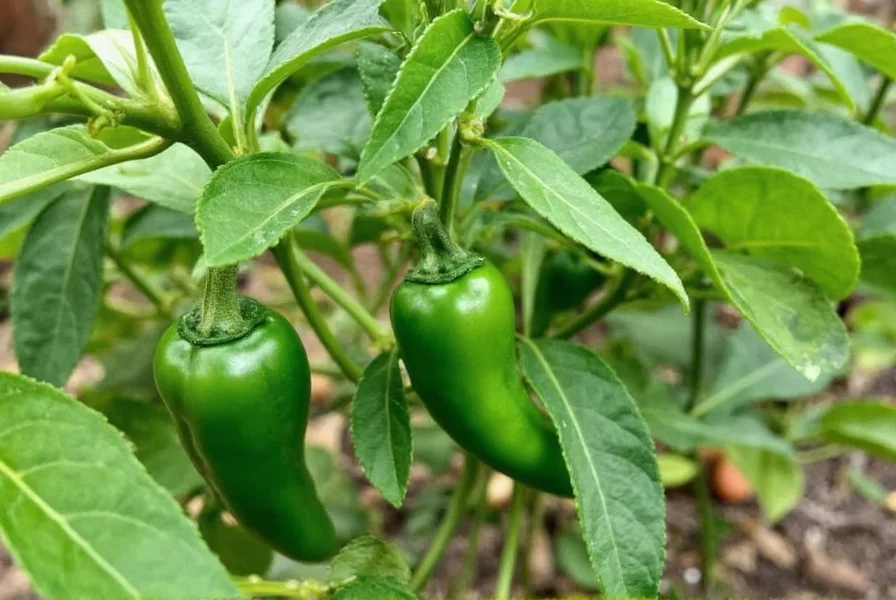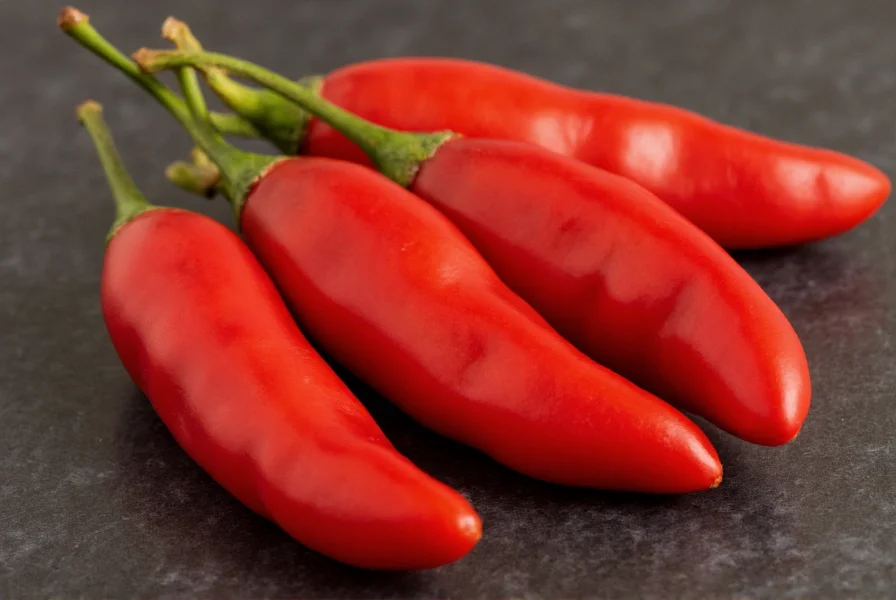These vibrant green peppers have become a staple in both Japanese cuisine and global culinary scenes, prized for their versatility and unique eating experience. Unlike most chili peppers that consistently deliver heat, shisitos offer an element of surprise—most are mild with grassy, slightly sweet notes, while the occasional pepper packs a spicy punch.
Origin and History of Shisito Peppers
Shisito peppers ( Capsicum annuum var. angulosum ) originated in Japan, where they've been cultivated for centuries. The name "shisito" comes from the Japanese words "shi" (four) and "shito" (finger), referring to their typical four-lobed shape. These peppers gained international popularity through Japanese izakayas (casual pubs) where they're traditionally prepared as shishitō no tsukudani (simmered in soy sauce and mirin) or simply grilled and sprinkled with sea salt.
While often spelled "shishito," the correct Japanese romanization is "shisito," though both variations appear commonly in English-language contexts. This spelling variation represents one of the most frequent points of confusion for culinary enthusiasts searching for authentic information about these unique peppers.
Physical Characteristics and Identification
Shisito peppers measure approximately 3-4 inches long with thin, delicate walls and a distinctive crinkled appearance. They start bright green and gradually turn red as they mature, though they're typically harvested and consumed while still green. The peppers have a characteristic pointed tip and often display four distinct lobes at the blossom end.
| Characteristic | Shisito Pepper | Comparison to Similar Peppers |
|---|---|---|
| Length | 3-4 inches | Shorter than padrón (2-5 inches) |
| Wall Thickness | Very thin | Thinner than padrón |
| Shape | Crinkled, often 4-lobed | More irregular than padrón |
| Heat Probability | 1 in 10 spicy | Similar to padrón (1 in 10) |
Flavor Profile and Heat Level Explained
The shisito pepper heat level remains one of its most distinctive features. Most shisitos register between 50-200 Scoville Heat Units (SHU), placing them in the same mild category as bell peppers (0 SHU) and significantly below even the mildest jalapeños (2,500 SHU). However, approximately 10% of shisito peppers develop enough capsaicin to register noticeable heat—creating the culinary equivalent of Russian roulette that makes eating them a fun social experience.
This unpredictable heat pattern results from environmental factors during growth rather than genetic differences. Stressors like temperature fluctuations, water scarcity, or soil nutrient variations can trigger capsaicin production in individual peppers. The heat, when present, tends to concentrate near the seeds and inner membranes.

Culinary Applications and Preparation Methods
Understanding how to cook shisito peppers properly unlocks their best qualities. The most traditional preparation involves:
- Grilling or broiling: High-heat cooking creates delicious char marks while maintaining crisp-tender texture
- Quick sauté: Cooked in hot oil with garlic until blistered
- Simple seasoning: Finished with flaky sea salt and citrus
Professional chefs recommend using high smoke-point oils like grapeseed or avocado oil when preparing shisito peppers, as their thin skins can burn easily in lower-temperature cooking methods. The peppers work equally well as appetizers, side dishes, or incorporated into main courses like rice bowls and noodle dishes.
Nutritional Profile and Health Benefits
Shisito peppers offer impressive nutritional benefits despite their small size. A one-cup serving (about 90g) provides:
- Nearly 100% of the daily recommended intake of vitamin C
- Significant amounts of vitamin A and B6
- Good source of dietary fiber (2g per serving)
- Contains capsaicinoids with potential metabolic benefits
- Only 20 calories per serving
These nutritional benefits make shisito peppers an excellent addition to balanced diets. Their shisito pepper nutritional benefits extend beyond basic vitamins, as the occasional capsaicin exposure may help boost metabolism and provide anti-inflammatory effects, though research specifically on shisitos remains limited compared to hotter chili varieties.
Growing Shisito Peppers at Home
Gardening enthusiasts can successfully grow shisito peppers with proper care. These plants thrive in warm climates but adapt well to container gardening in cooler regions. Key growing considerations include:
- Start seeds indoors 8-10 weeks before last frost date
- Transplant outdoors when soil temperature exceeds 60°F (15°C)
- Provide 6-8 hours of direct sunlight daily
- Maintain consistent moisture without waterlogging
- Harvest when peppers reach 3-4 inches and remain bright green
Home gardeners should note that growing conditions directly impact the shisito pepper heat level variability. Plants experiencing moderate stress (like temporary water restriction) may produce a higher percentage of spicy peppers, while consistently optimal conditions yield mostly mild specimens.

Shisito Peppers vs. Similar Varieties
Many consumers confuse shisito peppers with other mild Asian varieties. Understanding these differences helps with proper selection:
- Shisito vs. padrón peppers: While often used interchangeably, padróns are slightly larger, smoother, and originate from Spain. Both share the 1-in-10 heat ratio, but padróns tend to have earthier flavor notes.
- Shisito vs. Korean pepper: Korean peppers are consistently hotter and longer, typically used in kimchi preparation.
- Shisito vs. shishito spelling: "Shishito" is a common misspelling—the correct romanization is "shisito," though both appear in culinary contexts.
Shopping and Storage Recommendations
When selecting shisito peppers, look for:
- Bright, vibrant green color (avoid yellowing or wrinkled specimens)
- Firm texture with slight crispness
- Peppers of consistent size for even cooking
- Stems that appear freshly cut
For optimal freshness, store unwashed shisitos in a perforated plastic bag in the refrigerator's vegetable drawer. Properly stored, they maintain quality for 7-10 days. Avoid washing until ready to use, as excess moisture accelerates spoilage. For longer preservation, consider quick-pickling or freezing after blanching.
Frequently Asked Questions
Are shisito peppers always spicy?
No, shisito peppers are not always spicy. Approximately 90% of shisito peppers remain mild with a sweet, grassy flavor profile. Only about 1 in 10 shisito peppers contains enough capsaicin to register noticeable heat, creating the element of surprise that makes them popular in social dining settings.
What's the difference between shisito and shishito peppers?
There is no botanical difference—"shishito" is simply a common misspelling of "shisito." The correct romanization from Japanese is "shisito," though both spellings appear frequently in English-language culinary contexts. Some specialty markets may use "shishito" on labels, but they refer to the same pepper variety.
How do you know if a shisito pepper will be spicy?
You cannot reliably determine which shisito peppers will be spicy just by appearance. The heat develops internally during growth due to environmental stressors. Some chefs suggest that peppers with more pronounced curves or irregular shapes might be more likely to be spicy, but this isn't scientifically verified. The only way to know is to taste them—which is part of their culinary appeal!
Can you eat shisito peppers raw?
Yes, shisito peppers can be eaten raw, though they're most commonly prepared by grilling, broiling, or sautéing. Raw shisitos have a crisp texture with grassy, slightly sweet notes. Cooking enhances their flavor through caramelization and creates appealing char marks while maintaining a crisp-tender texture that many find more enjoyable than raw consumption.
Where can I buy shisito peppers?
Shisito peppers are widely available at major grocery chains (especially Whole Foods, Trader Joe's, and specialty markets), Asian grocery stores, and farmers' markets during their peak season (summer through early fall). Many conventional supermarkets now carry them year-round due to growing popularity. When selecting, look for bright green, firm peppers without wrinkles or soft spots for the best quality.











 浙公网安备
33010002000092号
浙公网安备
33010002000092号 浙B2-20120091-4
浙B2-20120091-4